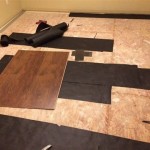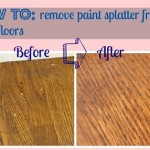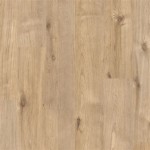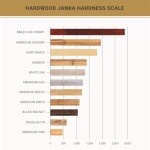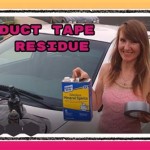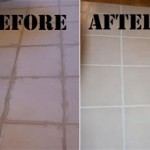How To Remove Glue Residue From Hardwood Floors
Removing glue residue from hardwood floors can be a frustrating task. Various types of adhesives, from construction adhesive to simple craft glue, can leave unsightly marks and sticky surfaces. The success of removing glue residue depends on the type of glue, the age of the residue, and the finish applied to the hardwood floor. Applying the correct methods and materials is paramount to prevent damage to the wood.
Before attempting any removal method, it is crucial to identify the type of glue residue. Common types include: construction adhesive (often used for subfloors or attaching moldings), polyurethane glue, epoxy, contact cement, hot glue, and standard white or school glue. Each adhesive has different chemical properties, requiring specific approaches for effective removal. Failure to accurately identify the glue may lead to the use of ineffective or even damaging solvents.
Additionally, understanding the type of finish on the hardwood floor is essential. Common finishes include polyurethane, varnish, shellac, and penetrating oil finishes. Some solvents that are safe for one type of finish might damage another. For example, acetone, a powerful solvent, can easily damage shellac or varnish finishes, whereas it may be suitable for removing certain glues from a polyurethane-coated floor. When in doubt, testing the chosen method in an inconspicuous area is always recommended.
Key Point 1: Initial Assessment and Preparation
The first step in removing glue residue involves a thorough assessment of the situation. This includes identifying the type of glue, the type of floor finish, and the extent of the residue. Taking clear photographs before starting can be helpful for record-keeping and potential consultation with professionals if unforeseen problems arise.
Before beginning any removal process, proper preparation is necessary to protect the surrounding area and oneself. This includes wearing appropriate personal protective equipment (PPE), such as gloves and eye protection. Gloves will prevent skin irritation from solvents or adhesives, and eye protection will shield against splashes. Adequate ventilation is also important, especially when working with solvents that produce fumes. Opening windows or using a fan can help to dissipate fumes and create a safer working environment.
Protecting the surrounding floor area is equally important. Applying painter's tape around the glue residue can prevent solvents or cleaning solutions from spreading to unaffected areas. It also helps to define the work area and minimize the risk of accidental damage. Covering furniture or other items in the vicinity with drop cloths further protects against spills or splashes.
Next, gather the necessary tools and materials based on the type of glue and floor finish. Common tools include: plastic scrapers (metal scrapers can scratch the wood), microfiber cloths, soft-bristled brushes, heat gun (optional), mineral spirits, acetone (use with caution and only if appropriate for the finish), vinegar, dish soap, and warm water. Having everything readily available will streamline the process and prevent unnecessary interruptions.
Key Point 2: Mechanical Removal Techniques
Often, the initial approach should involve mechanical removal techniques before resorting to chemical solvents. Mechanical methods are generally less aggressive and minimize the risk of damaging the floor finish. These methods include scraping, heating, and abrasion.
Scraping involves using a plastic scraper to gently lift the glue residue from the surface. Holding the scraper at a low angle and applying even pressure is crucial to avoid gouging or scratching the wood. Begin by softening the glue residue with warm water or a hairdryer on a low setting. The heat will help to loosen the bond between the glue and the floor, making it easier to remove. Avoid overheating the glue, as this can sometimes make it more difficult to remove.
For more stubborn adhesives, a heat gun can be used with extreme caution. Applying heat directly to the glue residue for a short period can soften it and make it easier to scrape away. However, it is vital to avoid overheating the wood, as this can damage the finish or even warp the wood itself. Keeping the heat gun moving and applying heat in short bursts is essential. Always test the heat gun in an inconspicuous area first to assess its impact on the floor finish.
Abrasion techniques should be used as a last resort for mechanical removal and with extreme caution. Fine-grit sandpaper (220 grit or higher) can be used to gently sand away the glue residue. However, sanding can easily damage the floor finish and should only be done if absolutely necessary. Always sand in the direction of the wood grain and use light, even pressure. After sanding, clean the area thoroughly with a tack cloth to remove any dust particles.
Key Point 3: Chemical Removal Techniques
If mechanical removal techniques prove insufficient, chemical solvents may be necessary to dissolve the glue residue. It is crucial to choose the appropriate solvent based on the type of glue and the floor finish. Always test the solvent in an inconspicuous area first to ensure it does not damage the finish.
Mineral spirits is a relatively mild solvent that is often effective for removing adhesive residue. It is less likely to damage floor finishes than more aggressive solvents like acetone. To use mineral spirits, apply a small amount to a clean microfiber cloth and gently rub the glue residue. Allow the mineral spirits to sit on the glue for a few minutes to soften it. Then, use a clean cloth to wipe away the dissolved glue. Repeat as necessary until the residue is completely removed.
Acetone is a powerful solvent that can dissolve many types of glue residue, including nail polish and super glue. However, acetone can also damage many floor finishes, including shellac, varnish, and some polyurethane coatings. Therefore, it should only be used on floors known to be resistant to acetone or as a last resort with extreme caution. When using acetone, work in a well-ventilated area and wear appropriate PPE, including gloves and eye protection. Apply a small amount of acetone to a clean cloth and gently rub the glue residue. Watch closely for any signs of damage to the floor finish. If damage occurs, immediately stop using acetone and try a different method.
Vinegar is a natural and less toxic alternative for removing some types of glue residue, particularly water-based adhesives like white glue or school glue. Vinegar is acidic and can help to break down the bond between the glue and the floor. To use vinegar, mix equal parts of white vinegar and warm water. Apply the mixture to the glue residue and let it sit for several minutes. Then, use a clean cloth to wipe away the dissolved glue. Repeat as necessary.
Dish soap and warm water can also be effective for removing certain types of glue residue, especially if the glue is still relatively fresh. Mix a small amount of dish soap with warm water. Apply the mixture to the glue residue and let it sit for a few minutes. Then, use a soft-bristled brush to gently scrub the area. Wipe away the dissolved glue with a clean cloth. Repeat as necessary. This method is generally safe for most floor finishes but may require repeated applications for stubborn residue.
After using any chemical solvent, it is essential to thoroughly clean the area with a clean, damp cloth to remove any remaining solvent residue. Allow the floor to dry completely before applying any floor wax or polish, if desired. This step helps to prevent any potential reactions between the solvent and the floor finish or subsequent cleaning products.
In cases of extensive or particularly stubborn glue residue, consulting a professional floor cleaning or restoration company may be the best option. Professionals have access to specialized equipment and cleaning solutions that can safely and effectively remove glue residue without damaging the floor. They also have the expertise to assess the situation and recommend the most appropriate course of action.
Prevention is always better than cure. When working with adhesives on or near hardwood floors, taking precautions to protect the floor is essential. Using drop cloths, covering the floor with protective paper, and being careful to avoid spills can significantly reduce the likelihood of glue residue problems in the future. Choosing appropriate adhesives for the specific application and following the manufacturer's instructions carefully can also help to minimize the risk of residue.
Properly maintaining hardwood floors is crucial for preventing glue residue from adhering strongly and making removal easier. Regular cleaning with a damp mop and appropriate floor cleaner can help to remove dirt and grime that can contribute to the buildup of adhesive residue. Applying a protective layer of floor wax or polish can also help to prevent glue from bonding directly to the floor finish, making it easier to remove if a spill occurs.

Removing Glue Or Adhesive From Hardwood Floors The Speckled Goat

Removing Glue Or Adhesive From Hardwood Floors The Speckled Goat

How To Remove Glue From Wood Floors Pete S

Removing Glue Residue From Hardwood Floors After Installer Left Like This

How To Remove Sticky Residue From Hardwood Floors

4 Ways To Remove Adhesive From A Hardwood Floor Wikihow

Removing Glue Residue From Brand New Wood Floors Professional Services In Kennesaw Ga

4 Ways To Remove Adhesive From A Hardwood Floor Wikihow

Flooring How Can I Remove Carpet Adhesive From Hardwood Floors Home Improvement Stack Exchange

Removing Glue Residue On Brand New Floors Saved 20k In Replacement Costs
See Also

